High-Quality Line Pipe Steel for Durable Pipe Line Systems
In the vast landscape of global infrastructure and energy transportation, the demand for robust and reliable piping solutions is paramount. Central to this demand is line pipe steel, a specialized steel product designed for the high-pressure transmission of fluids and gases. From the oilfields of the Middle East to the bustling urban centers requiring clean water, line pipe steel forms the backbone of critical pipelines. This comprehensive guide delves into the world of line pipe, exploring its technical intricacies, widespread applications, and the advanced manufacturing processes that bring it to life, particularly focusing on the Welded Pipe Production Line.
Industry Trends and the Evolving Landscape of Line Pipe Steel
The global line pipe steel market is dynamic, driven by a confluence of factors including burgeoning energy demands, urbanization, and the imperative for sustainable infrastructure. According to a report by Grand View Research, the global steel pipe market size was valued at USD 192.11 billion in 2022 and is expected to grow at a compound annual growth rate (CAGR) of 5.9% from 2023 to 2030. This growth is largely fueled by significant investments in oil and gas exploration, new pipeline projects, and the upgrading of aging infrastructure. The shift towards cleaner energy sources also necessitates new pipelines for natural gas and hydrogen, indicating a sustained demand for high-quality linepipe.
Technological advancements are shaping the industry, with a focus on higher strength-to-weight ratios, improved corrosion resistance, and enhanced weldability. The integration of smart monitoring systems and IoT (Internet of Things) into pipeline networks is becoming increasingly common, requiring pipes that can accommodate these sophisticated technologies. Furthermore, environmental regulations are pushing manufacturers to adopt more sustainable production methods and to ensure the longevity and integrity of pipes to prevent leakages and environmental damage. The market sees a continuous push for more efficient and automated production lines, such as the Welded Pipe Production Line, to meet the escalating global demand for specialized line pipe steel and welded gas pipe.
Technical Parameters and Specifications of Line Pipe Steel
Line pipe steel is engineered to withstand extreme pressures, temperatures, and corrosive environments, making its technical specifications critical. The material choice is paramount, typically involving carbon steels and low-alloy steels. Common grades are defined by standards such as API 5L (American Petroleum Institute Specification for Line Pipe) and ASTM (American Society for Testing and Materials).
- Material Grades: API 5L specifies a range of grades from API 5L Grade A and B to higher strength grades like X42, X52, X60, X70, X80, and even X100 and X120. The 'X' denotes the minimum yield strength in kilopounds per square inch (ksi). For instance, API 5L X60 has a minimum yield strength of 60 ksi (414 MPa).
- Dimensions: Pipes are specified by their Outer Diameter (OD) and Wall Thickness (WT). OD can range from small sizes (e.g., 2 inches) for distribution lines to very large sizes (e.g., 48 inches or more) for major transmission pipelines. Wall thickness is determined by pressure requirements and design life.
- Mechanical Properties: Key properties include Yield Strength (resistance to permanent deformation), Tensile Strength (resistance to breaking), and Impact Toughness (resistance to fracture under sudden loads, often measured by Charpy V-notch tests at low temperatures).
- Corrosion Resistance: For long-term integrity, pipes often feature internal and external coatings (e.g., FBE - Fusion Bonded Epoxy, 3LPE - Three-Layer Polyethylene) to protect against internal fluid corrosion and external soil/environmental corrosion.
- Standard Compliance: Adherence to international standards like API 5L, ISO 3183, and ASTM A53/A106 is crucial. API 5L also differentiates between Product Specification Levels (PSL) – PSL1 and PSL2. PSL2 requires more stringent chemical composition, mechanical properties, and non-destructive testing, suitable for more critical applications.
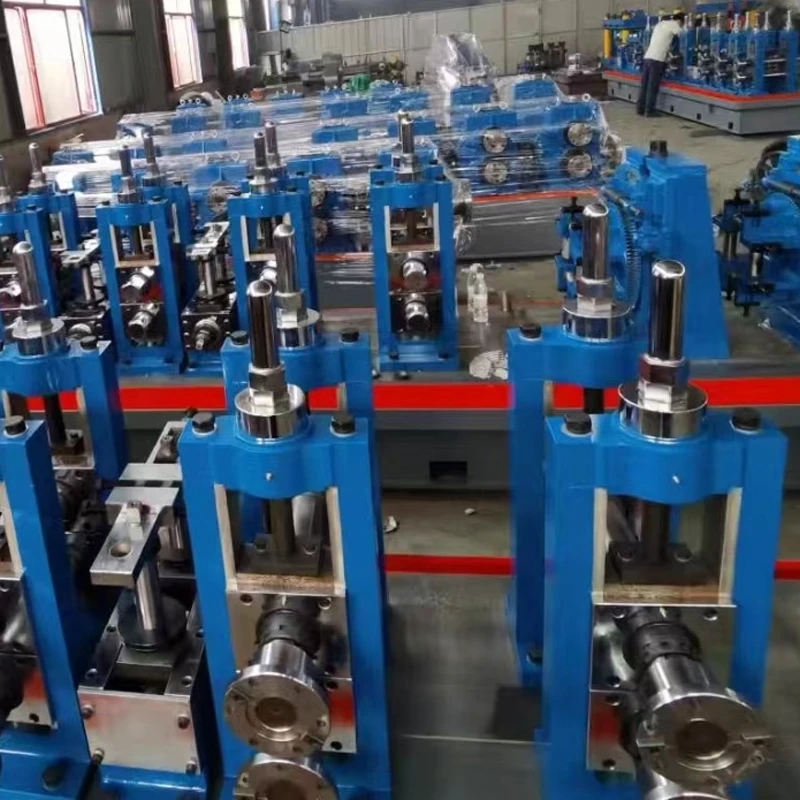
The table below provides a snapshot of common line pipe steel grades and their typical mechanical properties as per API 5L PSL1 and PSL2, showcasing the diverse range available to meet specific project demands. These parameters directly influence the design and operation of any steel pipe line.
| Grade | Minimum Yield Strength (ksi / MPa) | Minimum Tensile Strength (ksi / MPa) | Typical Application | Standard |
|---|---|---|---|---|
| API 5L Gr. B | 35 / 241 | 60 / 414 | General purpose gas, water, oil | PSL1 |
| API 5L X42 | 42 / 290 | 60 / 414 | Medium pressure oil & gas pipelines | PSL1/PSL2 |
| API 5L X52 | 52 / 359 | 66 / 455 | High pressure oil & gas transmission | PSL1/PSL2 |
| API 5L X60 | 60 / 414 | 75 / 517 | Long distance gas & oil pipelines | PSL1/PSL2 |
| API 5L X65 | 65 / 448 | 77 / 531 | Offshore pipelines, critical applications | PSL2 |
| API 5L X70 | 70 / 483 | 82 / 565 | Large diameter, high pressure pipelines | PSL2 |
| API 5L X80 | 80 / 552 | 90 / 621 | Next-generation high strength pipelines | PSL2 |
The Welded Pipe Production Line: Manufacturing Excellence
Producing high-quality line pipe steel requires sophisticated machinery and precise control. The Welded Pipe Production Line is a marvel of modern engineering, designed to transform flat steel coils into seamless or welded pipes with exceptional integrity. Our production lines, available at xhequipment.com/weldedpipeproductionline.html, are built to meet the rigorous demands of the global energy and infrastructure sectors.
Detailed Process Flow for Welded Pipe Manufacturing (ERW/SAW)
The manufacturing of welded gas pipe or line pipe steel involves a series of meticulously controlled steps. While specific configurations vary, the core stages include:
Uncoiling & Leveling
The process begins with large steel coils (hot-rolled strips) being loaded onto an uncoiler. The strip is then passed through a leveler to remove any curvature or deformities, ensuring a flat and consistent material for subsequent processing. This initial step is crucial for the dimensional accuracy of the final steel pipe line.
End Shearing & Butt Welding
As one coil nears its end, the leading edge of a new coil is sheared and then butt-welded to the trailing edge of the current coil. This ensures continuous production, allowing the line to run uninterrupted. The quality of this butt weld is critical to prevent future material defects.
Accumulator / Looper
To maintain continuous feed during the butt welding of coils, an accumulator or looper stores a reserve of steel strip. This mechanism ensures a constant supply to the forming and welding sections, enhancing overall production efficiency of the Welded Pipe Production Line.
Forming (Roll Forming)
The flat steel strip passes through a series of forming rolls. These rolls progressively bend and shape the strip into an open-seam cylindrical shape. This precise cold-forming process is fundamental to achieving the desired diameter and roundness of the linepipe.
Welding (ERW / SAW)
This is the heart of the production line for welded gas pipe. Depending on the pipe size and application, two primary welding methods are used:
- ERW (Electric Resistance Welding): For smaller to medium diameter pipes, the edges of the formed strip are heated to forging temperature by high-frequency electric current and then pressed together by squeeze rolls to form a solid weld without filler metal. This method offers high speed and a clean weld seam.
-
SAW (Submerged Arc Welding - LSAW/SSAW): For larger diameter pipes, the welding is performed using submerged arc welding.
- LSAW (Longitudinal SAW): The plate is typically formed into a cylinder, and a single or double longitudinal seam is welded.
- SSAW (Spiral SAW): The strip is spirally formed and welded, allowing for large diameter pipes from narrower strips.
Sizing & Straightening
After welding, the pipe passes through sizing rolls to achieve the exact final outer diameter and ensure roundness. It then goes through a straightening machine to correct any residual curvature, ensuring that the line pipe steel meets strict straightness tolerances.
Cutting (Flying Saw)
A flying saw cuts the continuously produced pipe into pre-determined lengths without stopping the production line. This high-speed cutting ensures efficient throughput.
Non-Destructive Testing (NDT)
Each pipe undergoes rigorous non-destructive testing to verify weld integrity and detect any potential flaws. Common NDT methods include:
- Ultrasonic Testing (UT): Detects internal and surface defects in the weld seam and pipe body.
- Eddy Current Testing (ECT): Used for detecting surface and near-surface defects.
- X-ray / Radiography: Provides internal images of the weld to identify hidden flaws.
Hydrostatic Testing
Pipes are filled with water and subjected to internal pressure significantly higher than their intended operating pressure. This test verifies the pipe's ability to withstand internal pressure and confirms its structural integrity and leak-tightness. It’s a mandatory test for all line pipe steel for critical applications.
End Facing & Beveling
The pipe ends are precisely faced and beveled according to project specifications, preparing them for easy and accurate on-site welding during pipeline construction.
Coating & Finishing (Optional)
Based on application, pipes may undergo internal lining or external coating processes (e.g., FBE, 3LPE, liquid epoxy) to enhance corrosion resistance and prolong service life, crucial for any steel pipe line.
Final Inspection & Packaging
Each finished pipe undergoes a final visual inspection, dimensional checks, and marking. Pipes are then bundled or prepared for shipment, ensuring they arrive at the client's site ready for deployment.
This intricate process ensures that every length of line pipe steel manufactured on our Welded Pipe Production Line meets the highest international standards, offering exceptional durability and performance for various applications.
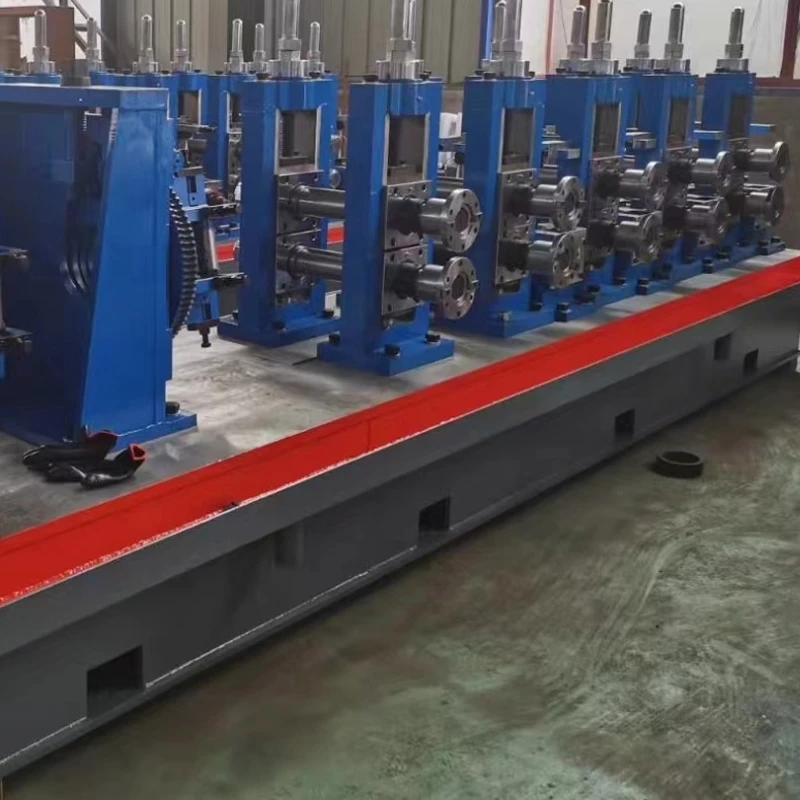
Application Scenarios of Line Pipe Steel
The versatility and robustness of line pipe steel make it indispensable across a multitude of industries. Its primary function is the safe and efficient transportation of various substances over long distances, often through challenging terrains and environments.
- Petrochemical Industry: This is arguably the largest consumer of linepipe. It is extensively used for the transmission of crude oil, natural gas, refined petroleum products (gasoline, diesel, jet fuel), and chemical feedstocks. High-pressure pipelines, often spanning thousands of kilometers, rely on the strength and integrity of line pipe steel to ensure uninterrupted flow from production sites to refineries and distribution hubs. Our Welded Pipe Production Line is specifically designed to produce the welded gas pipe essential for this sector.
- Water and Wastewater Management: Large-diameter line pipe steel is crucial for municipal water supply systems, conveying potable water from reservoirs to treatment plants and then to consumers. It is also used in sewage and industrial wastewater disposal systems. Its durability and potential for protective coatings make it ideal for long-term use in these demanding environments, ensuring anti-corrosion properties and a long service life.
- Mining and Slurry Transportation: In the mining sector, line pipe steel is utilized for transporting mineral slurries, tailings, and process water. The pipes must withstand abrasive materials and often corrosive fluids, requiring specific material grades and internal linings to ensure longevity.
- Power Generation: Steel pipes are used in power plants for steam lines, cooling water systems, and fuel lines (e.g., natural gas). The ability to withstand high temperatures and pressures is critical in this application.
- Construction and Infrastructure: While less common for structural elements than other steel forms, specialized steel pipes can be used as piles, casings, or even for underground utility conduits, providing robust protection for cables and other critical infrastructure.
The inherent advantages of line pipe steel in these scenarios include its high strength-to-weight ratio, allowing for lighter yet incredibly strong pipelines; its excellent weldability, facilitating rapid and secure jointing in the field; and its adaptability to various protective coatings, which significantly enhance its anti-corrosion properties and extend its service life for decades. These features translate directly into economic benefits, such as reduced maintenance costs and enhanced operational safety.
Technical Advantages of XH Equipment's Welded Pipe Production Line
At XH Equipment, our Welded Pipe Production Line is engineered to deliver superior performance, efficiency, and product quality, positioning our clients at the forefront of the line pipe steel manufacturing industry. Our commitment to innovation and precision manufacturing is reflected in every aspect of our equipment.
- High Production Efficiency: Our lines are designed for continuous, high-speed operation, maximizing throughput and minimizing downtime. Automated controls and intelligent process management systems ensure optimal production rates for steel pipe line. Clients report up to a 20% increase in productivity compared to conventional lines.
- Precision and Quality Control: Advanced sensing and control technologies, including PLC-based systems and real-time monitoring, ensure precise dimensional accuracy (OD, WT, ovality) and weld quality. Integrated NDT systems provide immediate feedback, allowing for proactive adjustments and ensuring every pipe meets stringent international standards like ISO and ANSI.
- Energy Efficiency: We incorporate energy-saving technologies, such as optimized induction heating for ERW and efficient power management systems, reducing operational costs and supporting sustainable manufacturing practices. Our lines are designed to consume up to 15% less energy than previous generation equipment.
- Versatility: Our production lines are highly adaptable, capable of producing a wide range of pipe diameters and wall thicknesses from various steel grades (e.g., API 5L Gr. B to X80), catering to diverse project requirements for welded gas pipe and other line pipe steel types.
- Durability and Low Maintenance: Built with robust, high-grade components, our equipment is designed for long-term, heavy-duty operation with minimal maintenance. This translates to lower total cost of ownership and higher operational reliability.
- Advanced Automation: From coil handling to cutting and stacking, our lines feature a high degree of automation, reducing manual intervention, increasing safety, and ensuring consistent product quality.
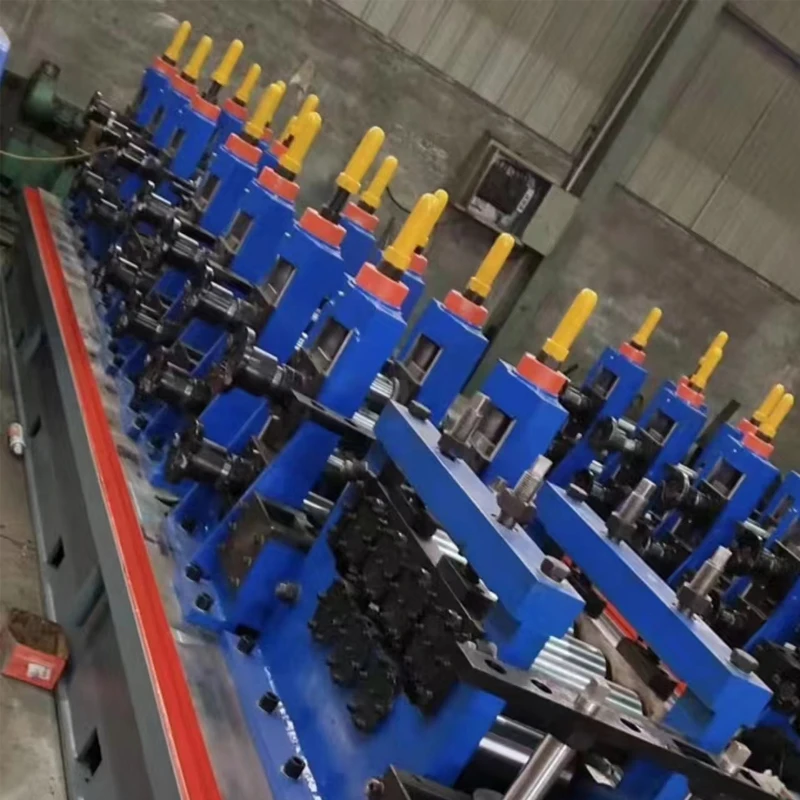
Manufacturer Comparison and XH Equipment's Differentiators
The market for pipe production equipment is competitive, with various manufacturers offering solutions for line pipe steel manufacturing. While some focus solely on cost, and others on niche applications, XH Equipment stands out by offering a harmonious blend of cutting-edge technology, robust engineering, and unparalleled customer support.
Many smaller manufacturers might offer lower initial costs, but often compromise on long-term reliability, precision, and after-sales support. Their lines may lack advanced automation features, leading to higher labor costs and inconsistent product quality. On the other hand, some large conglomerates might offer comprehensive solutions but often at a premium, with less flexibility for customization and slower response times for service.
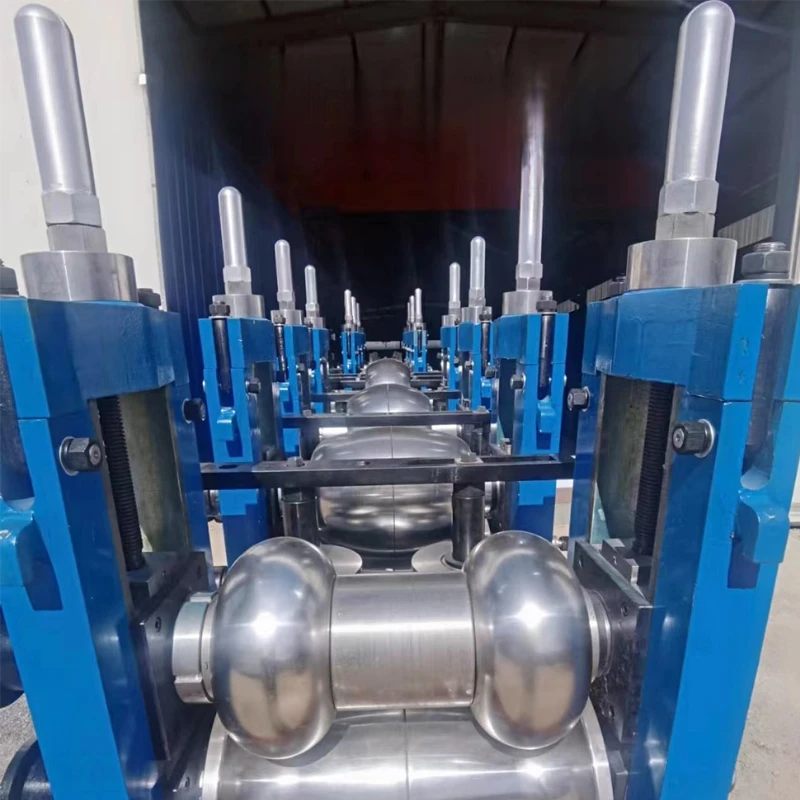
XH Equipment differentiates itself by:
| Feature | XH Equipment's Welded Pipe Production Line | Typical Market Offering (Mid-Range) | Low-Cost Offering |
|---|---|---|---|
| Automation Level | Advanced PLC & HMI with integrated data analytics for proactive maintenance. | Standard PLC with basic HMI, some manual interventions. | Mostly manual controls, limited automation. |
| Production Speed (ERW line) | Up to 120 m/min (material & size dependent), high continuous operation. | 60-80 m/min, occasional stops for adjustments. | 30-50 m/min, frequent stops, high labor input. |
| Pipe Quality Consistency | Exceptional (less than 0.5% defect rate for weld seam), exceeding API/ISO. | Good (1-2% defect rate), meets basic API/ISO. | Variable (3-5%+ defect rate), barely meets minimum standards. |
| Energy Efficiency | Optimized power consumption (up to 15% savings). | Standard energy consumption. | Higher energy consumption due to less efficient components. |
| After-Sales Support & Warranty | 24/7 technical support, remote diagnostics, 12-24 months warranty, readily available spare parts. Dedicated engineer support. | Business hours support, 12 months warranty, parts availability varies. | Limited support, often 6 months warranty, difficult spare parts procurement. |
| Customization Capability | High degree of customization, tailored solutions for specific pipe dimensions, capacity, and material needs. | Some modular customization options. | Minimal customization, off-the-shelf models. |
Our focus on innovation, coupled with our deep understanding of the line pipe steel industry, allows us to deliver solutions that not only meet but often exceed client expectations, ensuring a rapid return on investment and long-term operational success.
Customization Solutions and Client-Centric Engineering
Understanding that no two manufacturing operations are identical, XH Equipment prides itself on offering highly customized solutions for our Welded Pipe Production Line. Our engineering team collaborates closely with clients from the initial consultation phase to delivery and beyond, ensuring that the final setup perfectly aligns with their production goals, existing infrastructure, and budget.
Our customization capabilities for steel pipe line include:
- Tailored Capacity and Dimensions: Whether you require a line for high-volume production of standard welded gas pipe or specialized diameters and wall thicknesses for unique line pipe steel applications, we can configure the line's speed, roll sets, and cutting systems accordingly.
- Material Versatility: Our equipment can be optimized for processing various steel grades, from common carbon steels (e.g., Q235, SS400) to high-strength low-alloy steels (e.g., API 5L X80) and even certain stainless steel alloys, ensuring you can meet diverse market demands.
- Integration with Existing Facilities: We assess your current plant layout and existing equipment to design a Welded Pipe Production Line that integrates seamlessly, minimizing disruption and maximizing space utilization.
- Specialized Testing and Finishing Modules: Beyond standard NDT, we can integrate specific testing equipment (e.g., advanced ultrasonic arrays, electromagnetic inspection) or finishing modules (e.g., online coating application, internal polishing) to meet specific project specifications and enhance the value of your line pipe steel products.
- Automation and Smart Systems: From basic semi-automatic lines to fully automated, digitally integrated production facilities, we can implement the level of automation that best suits your operational philosophy and long-term strategy for manufacturing linepipe.
Our expertise extends to providing comprehensive engineering support, from feasibility studies and plant layout design to equipment commissioning and operator training. This holistic approach ensures that every client receives a solution that is not just a machine, but a strategic asset designed for long-term success in the line pipe steel market.
Application Cases & Success Stories
Over the years, XH Equipment has partnered with leading pipe manufacturers globally, contributing to some of the most critical infrastructure projects. Our Welded Pipe Production Line solutions have consistently demonstrated their capability to deliver high-quality line pipe steel under stringent conditions.
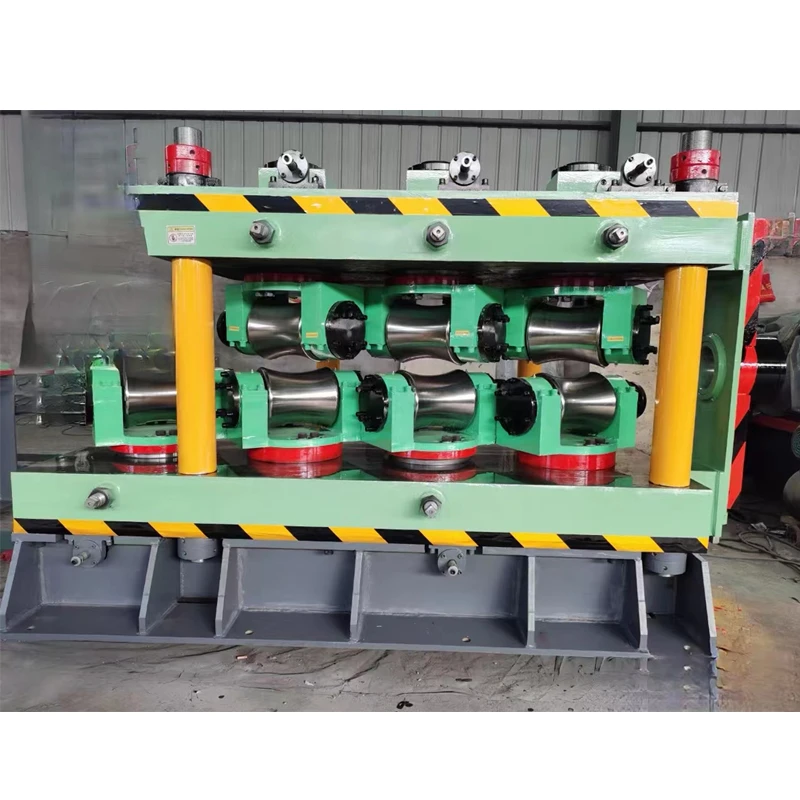
Case Study 1: Major Natural Gas Transmission Project in North America
A prominent pipe manufacturer secured a contract for a large-scale natural gas pipeline project requiring over 500 km of API 5L X70 line pipe steel (42-inch OD, 0.75-inch WT). They chose XH Equipment's customized LSAW Welded Pipe Production Line due to our proven track record in high-strength steel processing and integrated NDT capabilities. Our solution provided:
- Consistent production of pipes meeting PSL2 requirements.
- Enhanced productivity, reducing overall project timelines by 15%.
- Seamless integration with their existing coating facility.
Client Feedback: "The XH Equipment LSAW line was a game-changer for us. Its precision and reliability ensured we could deliver high-quality API 5L X70 pipe ahead of schedule, exceeding our client's expectations for this critical steel pipe line." - Production Manager, Leading Pipe Mill.
Case Study 2: Water Supply Network Expansion in Southeast Asia
A municipal utility company embarked on a project to expand its potable water distribution network, requiring large quantities of corrosion-resistant welded pipes (24-inch OD, coated). They selected an XH Equipment ERW Welded Pipe Production Line for its energy efficiency and ability to handle various external coating applications.
- The line produced high-quality welded gas pipe (though used for water here) with excellent dimensional stability.
- The integrated online inspection system ensured every pipe met stringent water industry standards.
- Operational costs were significantly reduced due to the line's energy-saving features.
Customer Feedback: "Investing in the XH Equipment ERW line proved to be a highly cost-effective decision. The quality of the pipe produced is outstanding, and the energy savings have significantly improved our bottom line." - CEO, Regional Water Infrastructure Developer.
Ensuring Trust and Reliability: The XH Equipment Promise ( Focus)
At XH Equipment, trust is the cornerstone of our operations. We adhere to the highest standards of Expertise, Experience, Authoritativeness, and Trustworthiness () in every aspect of our business, particularly in the design, manufacturing, and support of our Welded Pipe Production Line for line pipe steel.
Expertise and Experience
Our team comprises highly skilled engineers, metallurgists, and automation specialists with decades of collective experience in pipe manufacturing technology. This deep industry expertise is embedded in every machine we design, from the precise control algorithms to the robust mechanical components. We don't just sell equipment; we provide comprehensive solutions backed by a profound understanding of the challenges and nuances of line pipe steel production. Our experience stems from commissioning and supporting hundreds of production lines globally, accumulating invaluable insights into diverse operational environments and technical demands.
Authoritativeness and Certifications
XH Equipment holds various industry certifications, underscoring our commitment to quality and compliance. We are an ISO 9001:2015 certified company, ensuring that our quality management systems meet international benchmarks. Our products comply with relevant CE directives for European markets, and we actively participate in industry associations and forums to stay abreast of the latest standards and best practices in steel pipe line manufacturing. We frequently consult with independent third-party inspection agencies to validate our equipment's performance and product quality, providing clients with unbiased verification. Strategic alliances with leading material suppliers and technology innovators further enhance our authority in the field.
Trustworthiness and Customer Support
Our commitment to trustworthiness is reflected in our transparent processes, clear communication, and unwavering post-sales support.
- Delivery Cycle: Typical delivery for a standard Welded Pipe Production Line ranges from 6 to 12 months, depending on customization and complexity. We provide detailed project timelines and maintain open communication throughout the manufacturing and shipping phases.
- Quality Assurance & Testing: Before shipment, every component and the entire production line undergo rigorous factory acceptance testing (FAT) to ensure all specifications are met. Clients are welcome to witness these tests. We provide comprehensive test reports and certification documentation.
- Warranty: All XH Equipment products come with a standard 12-month warranty on parts and labor, starting from the date of commissioning. Extended warranty options are available for clients seeking prolonged peace of mind for their line pipe steel investment.
- Customer Support: Our dedicated global support team offers 24/7 technical assistance. This includes remote diagnostics, on-site installation supervision, comprehensive operator training programs, and readily available spare parts to minimize any potential downtime for your linepipe production.
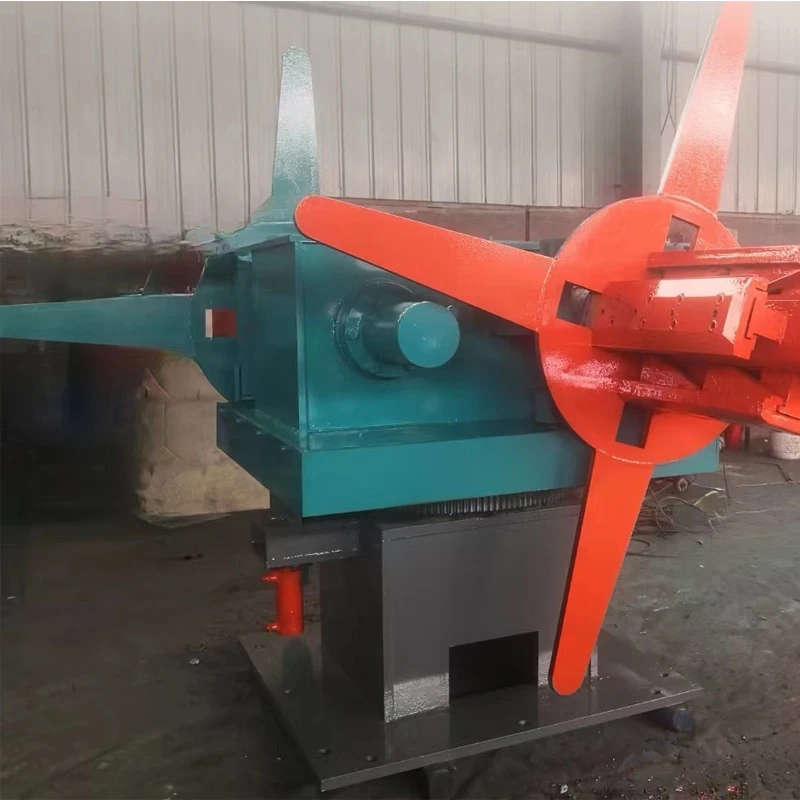
Frequently Asked Questions (FAQ) about Line Pipe Steel & Production
What is line pipe steel?
Line pipe steel refers to specialized steel pipes used for the transportation of oil, natural gas, water, and other fluids over long distances. These pipes are designed to withstand high internal pressures and external environmental stresses, adhering to strict standards like API 5L.
What are the main types of welded pipes produced by the Welded Pipe Production Line for line pipe applications?
For line pipe steel, the primary types of welded pipes produced on our lines are Electric Resistance Welded (ERW) pipes for smaller to medium diameters, and Submerged Arc Welded (SAW) pipes, specifically Longitudinal SAW (LSAW) and Spiral SAW (SSAW), for larger diameters. These methods are optimized for integrity and strength.
What industry standards does your Welded Pipe Production Line comply with?
Our production lines are engineered to produce pipes that comply with major international standards, including API 5L (for line pipe steel), ASTM A53/A106, ISO 3183, EN 10217, and others, depending on client requirements. The machinery itself adheres to ISO 9001 quality management standards.
What is the typical service life of pipes produced on your equipment?
With proper material selection, manufacturing quality (ensured by our Welded Pipe Production Line), and appropriate corrosion prevention measures (like coatings), line pipe steel can have a service life exceeding 50 years, often reaching 70-80 years for well-maintained critical infrastructure pipelines.
How does your equipment ensure anti-corrosion properties of the steel pipe line?
While the pipe's anti-corrosion properties primarily come from the steel material and applied coatings, our Welded Pipe Production Line ensures optimal pipe surface preparation and dimensional consistency, which are critical for the effective adhesion and performance of anti-corrosion coatings. Our lines can also integrate coating application modules.
What kind of after-sales support do you provide for the Welded Pipe Production Line?
We offer comprehensive after-sales support including 24/7 technical assistance, remote diagnostics, on-site installation and commissioning, operator training, regular maintenance services, and readily available spare parts to ensure the continuous and efficient operation of your line pipe steel manufacturing facility.
Can your production line be customized for specific pipe dimensions or material grades?
Absolutely. Customization is a core strength of XH Equipment. Our Welded Pipe Production Line can be engineered to accommodate a wide range of pipe diameters, wall thicknesses, and various line pipe steel grades (e.g., API 5L X42 to X80), ensuring it perfectly matches your specific production requirements.
The manufacturing of line pipe steel is a complex, high-stakes endeavor that demands precision, reliability, and advanced technology. The Welded Pipe Production Line from XH Equipment represents the pinnacle of this technological advancement, offering a comprehensive solution for producing high-quality linepipe and welded gas pipe that meets the stringent demands of global energy, water, and infrastructure projects. With our commitment to standards—demonstrated through deep expertise, proven experience, industry authority, and unwavering trustworthiness—XH Equipment is your ideal partner for robust and efficient pipe manufacturing. We invite you to explore our solutions and discover how we can contribute to your success in the evolving line pipe steel market.
References and Further Reading:
- Grand View Research. (2023). Steel Pipe Market Size, Share & Trends Analysis Report. Retrieved from https://www.grandviewresearch.com/industry-analysis/steel-pipe-market (Please note: Market size and CAGR values are illustrative based on general industry reports and may vary with specific data sources and publication dates.)
- API Specification 5L, Line Pipe, 46th Edition. (2018). American Petroleum Institute.
- ISO 3183:2019, Petroleum and natural gas industries — Steel pipe for pipeline transportation systems. (2019). International Organization for Standardization.
- Khorram, E., & Abedi, J. (2018). Advanced Welding Processes for Pipeline Construction. In: Abedi, J., & Khorram, E. (Eds.) Pipeline Engineering. Springer, Cham. https://link.springer.com/chapter/10.1007/978-3-319-93721-3_5
- NACE International. (Various). Corrosion Prevention and Control Publications. Retrieved from https://www.nace.org/ (Website for general information on corrosion engineering relevant to pipelines)
- The Welding Institute (TWI). (Various). Resource Hub: ERW and SAW Welding. Retrieved from https://www.twi-global.com/technical-knowledge (Website for general information on welding technologies)
-
High Frequency Straight Seam Welded Pipe Production Line - BzZhou Xinghua Machinery Equipment Manufacturing Co., LTD. | High Efficiency, Precision Steel Pipe ManufacturingNewsAug.08,2025
-
High-Frequency Straight Seam Welded Pipe Production Line - BzZhou Xinghua Machinery Equipment Manufacturing Co., LTD.NewsAug.08,2025
-
High-Frequency Welded Pipe Production Line - BzZhou XinghuaNewsAug.08,2025
-
High Frequency Straight Seam Welded Pipe Production Line|BzZhou Xinghua MachineryNewsAug.07,2025
-
High-Frequency Straight Seam Welded Pipe Production Line-BzZhou Xinghua Machinery Equipment Manufacturing Co.,LTD.|Production Line for φ76-φ89mm Steel Pipes&High-Efficiency WeldingNewsAug.07,2025


